How to RepairChips in Your Granite Countertops: Step-by-Step Instructions for a Flawless Finish
Granite countertops are a beautiful addition to any kitchen or bathroom, but they are not immune to damage. Chips and cracks are unfortunate but common occurrences that can detract from the beauty of your countertops. Luckily, repairing these flaws is easier than you might think! In this ultimate guide, we’ll provide you with step-by-step instructions to repair chips and cracks in your granite countertops, leaving them looking flawless once again. From assessing the damage to selecting the right materials and tools, we’ll cover everything you need to know to achieve a professional-quality repair. Whether you’re a seasoned DIY enthusiast or a beginner, our guide is designed to be easy to follow and understand. So, let’s get started and restore your granite countertops to their former glory!
Understanding the Causes of Granite Countertop Damage
Granite is a popular countertop material because of its durability and beautiful appearance. However, even the toughest granite can sustain chips and cracks. Understanding the cause of the damage can help you prevent it from happening in the future. Here are some common causes of granite countertop damage:
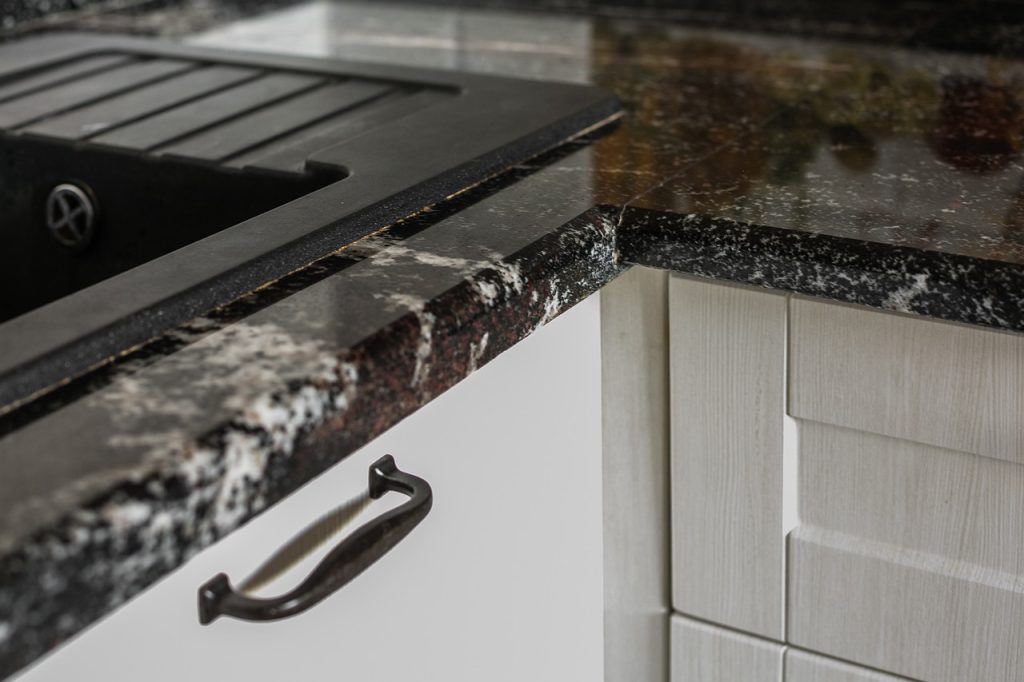
Heavy Impact
Granite is a hard and durable material, but it can still be damaged by a heavy impact. Dropping a heavy object on your granite countertop can create chips or cracks. The severity of the damage depends on the force of the impact.
Thermal Shock
Granite is resistant to heat, but sudden changes in temperature can cause it to crack. Placing a hot pan directly on your granite countertop or pouring cold water on a hot surface can cause thermal shock. Over time, repeated exposure to thermal shock can lead to cracks.
Natural Wear and Tear
Granite countertops are meant to last for many years, but they are not indestructible. Over time, the natural wear and tear of daily use can cause chips and cracks in the granite. Normal wear and tear can be exacerbated by improper cleaning, harsh chemicals, and abrasive cleaners.
Tools and Materials Needed for Repairing Chips and Cracks
Repairing chips and cracks in your granite countertop requires some specialized tools and materials. Here are the things you’ll need:
Granite Repair Kit
You can purchase a granite repair kit at most home improvement stores or online. The kit should include epoxy or acrylic adhesive, a color-matching compound, and a clear, two-part topcoat.
Razor Blade
You’ll need a razor blade to remove any excess adhesive from the surface of your countertop.
Fine Grit Sandpaper
Fine grit sandpaper is used to smooth out the repaired area and blend it with the surrounding granite.
Soft Cloth
A soft cloth is used to clean the surface of your countertop and apply the topcoat.
Small Paintbrush
A small paintbrush is used to apply the color-matching compound to the repaired area.
Assessing the Extent of the Damage
Before you can begin repairing your granite countertop, you need to assess the extent of the damage. Here are the steps to follow:
Clean the Countertop
Using a soft cloth and warm soapy water, clean the damaged area of your countertop. Make sure to remove any dirt, grime, or debris from the crack or chip.
Dry the Countertop
Using a clean, dry cloth, thoroughly dry the damaged area of your countertop. Make sure there is no moisture left on the surface.
Inspect the Damage
Use a magnifying glass to inspect the damage. Look for any hairline cracks or deep chips. Determine whether the damage is cosmetic or structural.
Take Measurements
Using a ruler or tape measure, take precise measurements of the damaged area. This will help you determine the amount of adhesive and color-matching compound needed for the repair.
Preparing the Damaged Area for Repair
Now that you’ve assessed the damage, it’s time to prepare the damaged area for repair. Here are the steps to follow:
Apply Masking Tape
Using masking tape, create a border around the damaged area. This will help contain the adhesive and prevent it from spreading to other areas of your countertop.
Sand the Damaged Area
Using fine grit sandpaper, sand the damaged area until it is smooth and even. This will help the adhesive adhere to the surface of your countertop.
Clean the Damaged Area
Using a soft cloth and warm soapy water, clean the damaged area of your countertop. Make sure to remove any dirt, grime, or debris from the crack or chip.
Dry the Damaged Area
Using a clean, dry cloth, thoroughly dry the damaged area of your countertop. Make sure there is no moisture left on the surface.
Filling the Chip or Crack with Epoxy or Acrylic Adhesive
Now that the damaged area is prepared, it’s time to fill the chip or crack with epoxy or acrylic adhesive. Here are the steps to follow:
Mix the Adhesive and Color-Matching Compound
Following the instructions on your granite repair kit, mix the epoxy or acrylic adhesive and color-matching compound together in a small container.
Are Colored Fillers a Better Option for Repairing Granite Countertops?
When it comes to repairing chips or cracks on granite countertops, the most common materials used are clear epoxy or superglue. They work effectively in most cases as they allow the natural color and texture of the granite to show through. However, colored epoxies are also available, but are they a better choice for repairing granite countertops?
While colored fillers can be used to create a closer match to the original color of the granite, it’s important to exercise caution when using them. If the color of the filler isn’t an exact match, the repair could end up being more noticeable than the original chip or crack. In such cases, purchasing different shades and mixing them yourself may be necessary to achieve a closer match. Ultimately, the decision to use a colored filler or not depends on the extent of the damage and the level of precision required for the repair.
Apply the Adhesive
Using a small paintbrush, apply the adhesive to the damaged area. Make sure the adhesive covers the entire damaged area and is evenly distributed.
Smooth and Level the Adhesive
Using a plastic scraper or putty knife, smooth and level the adhesive until it is flush with the surface of your countertop.
Allow the Adhesive to Dry
Depending on the specific repair kit you’re using, you may need to wait several hours or overnight for the adhesive to dry completely.
Sanding and Smoothing the Repaired Area
Once the adhesive is dry, it’s time to sand and smooth the repaired area. Here are the steps to follow:
Sand the Repaired Area
Using fine-grit sandpaper, sand the repaired area until it is smooth and even. Make sure to remove any excess adhesive from the surface of your countertop.
Clean the Repaired Area
Using a soft cloth and warm soapy water, clean the repaired area of your countertop. Make sure to remove any dust or debris from the sanding process.
Dry the Repaired Area
Using a clean, dry cloth, thoroughly dry the repaired area of your countertop. Make sure there is no moisture left on the surface.
Buffing and Polishing the Countertop
Now that the repaired area is smooth and even, it’s time to buff and polish the entire countertop. Here are the steps to follow:
Apply the Topcoat
Following the instructions on your granite repair kit, apply the clear, two-part topcoat to your entire countertop. Make sure to apply it evenly and in a thin layer.
Buff the Countertop
Using a soft cloth and a buffing compound, buff the entire surface of your countertop. This will help remove any scratches and restore the shine.
Polish the Countertop
Using a clean, dry cloth, polish the entire surface of your countertop. This will help bring out the natural beauty of the granite.
Preventing Future Damage to Your Granite Countertops
Now that your granite countertop is repaired and looking like new, it’s important to take steps to prevent future damage. Here are some tips to keep your countertops looking great:
Use Trivets and Hot Pads
Always use trivets and hot pads when placing hot pots and pans on your granite countertop. This will prevent thermal shock and protect your countertop from damage.
Avoid Harsh Chemicals
Avoid using harsh chemicals and abrasive cleaners on your granite countertop. These can dull the surface and cause damage over time.
Clean Regularly
Clean your granite countertop regularly with warm soapy water and a soft cloth. This will help prevent dirt, grime, and debris from building up and causing damage.
Conclusion and Final Tips for a Flawless Finish
Repairing chips and cracks in your granite countertop is easier than you might think! By following the steps outlined in this guide, you can achieve a professional-quality repair and restore your countertop to its former glory. Remember to assess the extent of the damage, prepare the damaged area for repair, fill the chip or crack with epoxy or acrylic adhesive, sand and smooth the repaired area, and buff and polish the entire countertop. By taking steps to prevent future damage, you can keep your granite countertop looking great for years to come.

Final Words
Are you interested in learning more about repairing chips in granite countertops and other hard surfaces? Consider signing up for the online SurfaceDefectMasters course. Our course is designed to teach beginners everything they need to know to become skilled hard surface cosmetic repair technicians in just three months.
Our expert instructors will guide you through the process of repairing chips, cracks, and other surface defects on various materials, including granite, ceramics, laminates, plastics, metals, and more. By the end of the course, you’ll have gained a valuable skillset that can help you launch a successful career in the construction industry, or provide a valuable service to homeowners and businesses in need of surface repairs.
In the SurfaceDefectMasters course, you’ll learn the most effective and efficient techniques for repairing a wide range of surfaces and substrates. You’ll also learn how to build a successful business in your area and how to price your services. Plus, you’ll have access to ongoing support and resources to help you grow your skills and expand your business.
Don’t let chips in granite countertops or other surface defects hold you back. Enroll in SurfaceDefectMasters today and learn a valuable skillset that can help you achieve your goals and earn up to $100 per hour. Visit our course website to learn more.



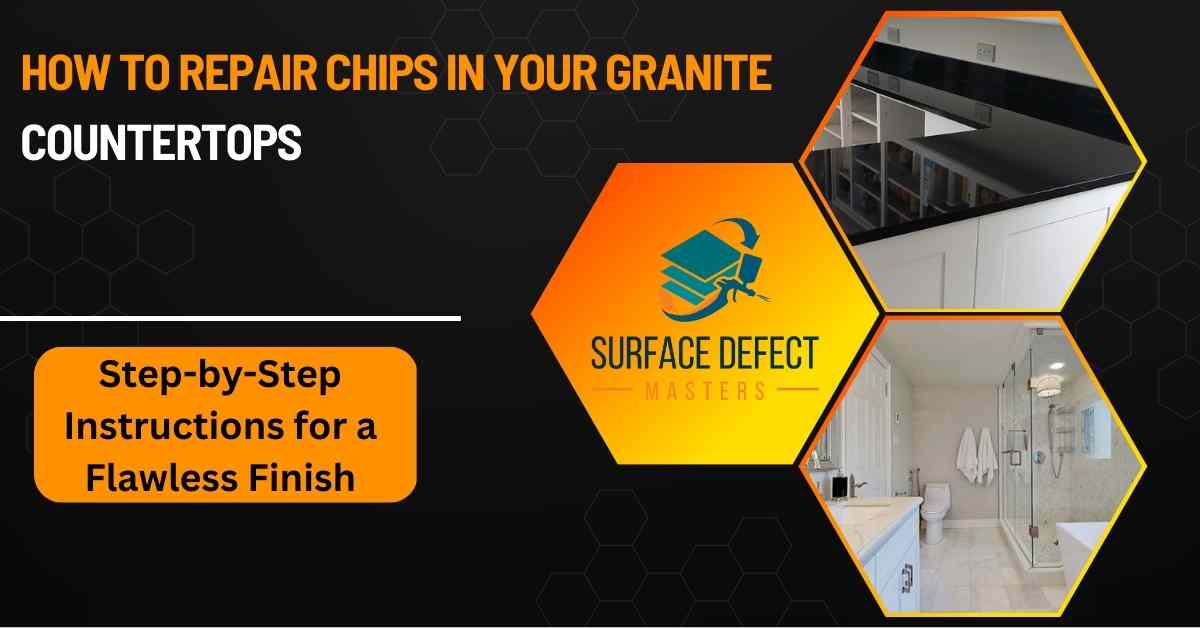




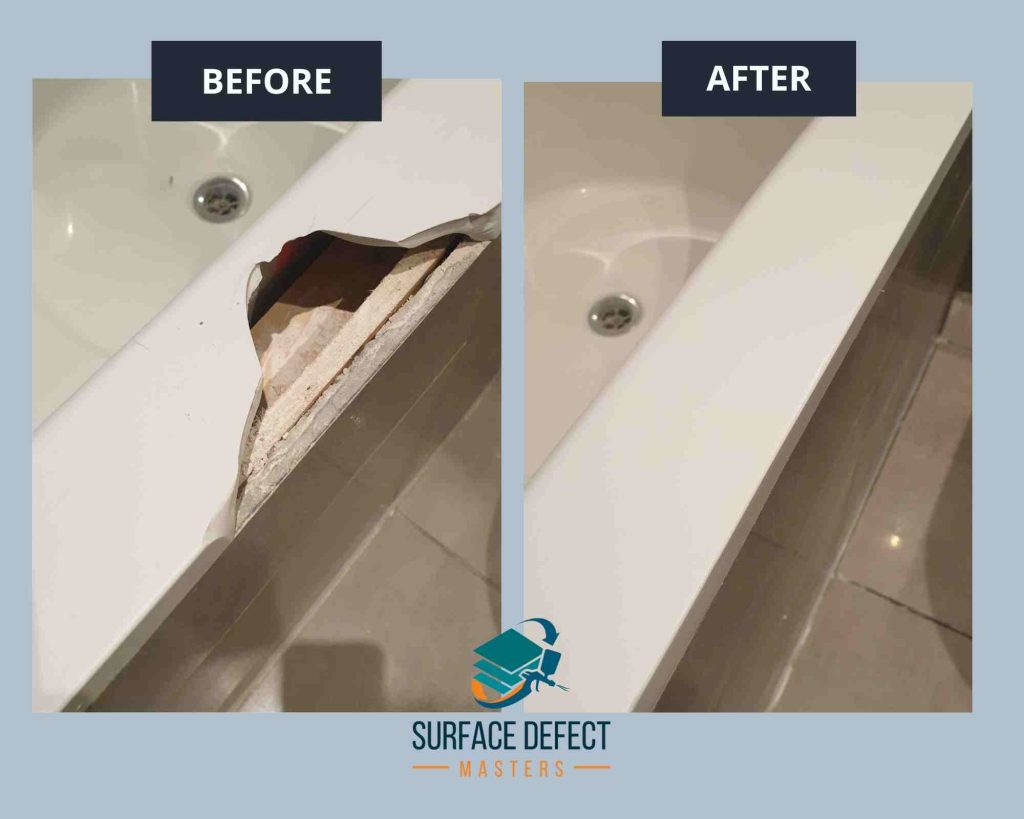
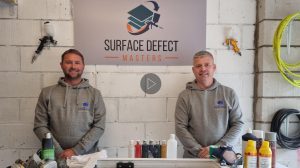 Enrolling in our course is perfect for beginners and those who want to master Hard Surface Repairs. There is a growing demand for these skills in the USA, and it’s effortless to establish a thriving self-employed business offering these repairs in your local community with almost no competition from rivals. If you search for “Hard Surface Repairs near me” or “multi-surface repair [hometown]” on Google right now, you’ll probably find only one company (if any) offering these types of repairs. You might see companies that specialize in bath repairs, but you’ll be hard-pressed to find one that provides multi-surface repairs such as ceramics, plastics, wood, GRP, composites, laminates, marble, and quartz. Being multi-skilled and leaving a great job every time is a surefire way to attract a lot of work, as we have been for years. Hard Surface Repairs is a valuable skill to have.
Enrolling in our course is perfect for beginners and those who want to master Hard Surface Repairs. There is a growing demand for these skills in the USA, and it’s effortless to establish a thriving self-employed business offering these repairs in your local community with almost no competition from rivals. If you search for “Hard Surface Repairs near me” or “multi-surface repair [hometown]” on Google right now, you’ll probably find only one company (if any) offering these types of repairs. You might see companies that specialize in bath repairs, but you’ll be hard-pressed to find one that provides multi-surface repairs such as ceramics, plastics, wood, GRP, composites, laminates, marble, and quartz. Being multi-skilled and leaving a great job every time is a surefire way to attract a lot of work, as we have been for years. Hard Surface Repairs is a valuable skill to have.
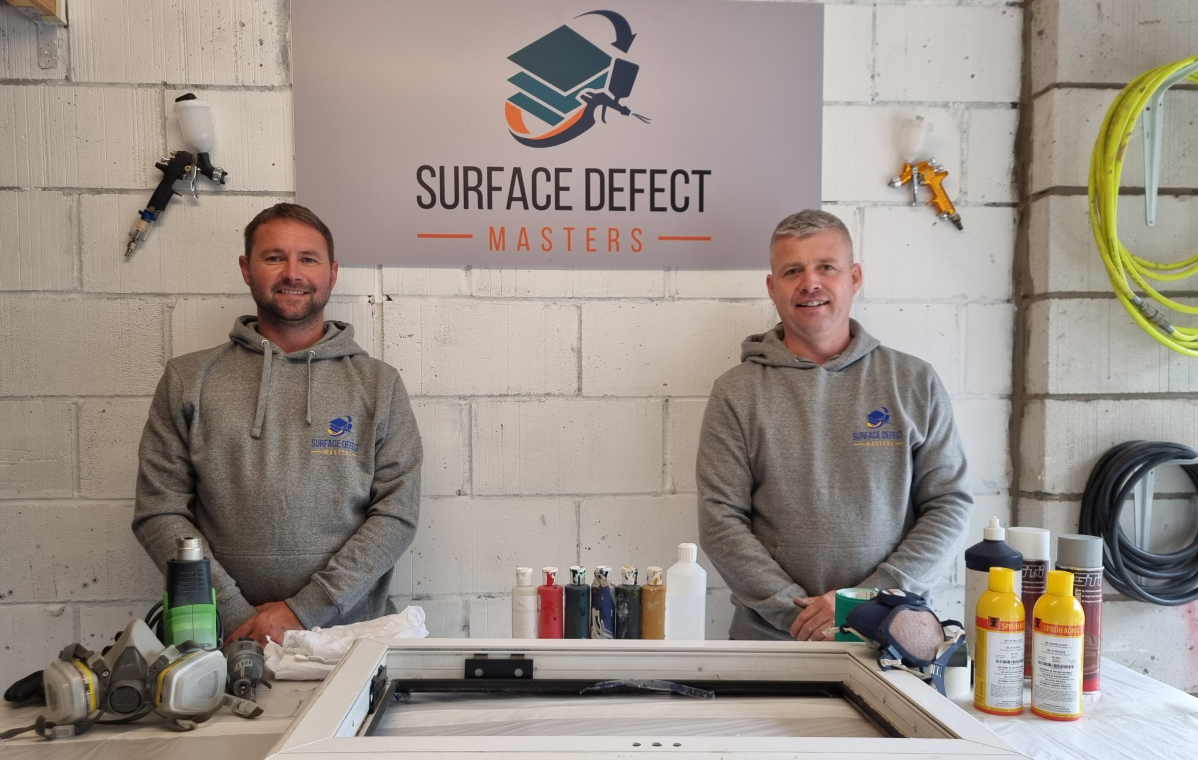 Our hard Surface Repair course covers a wide range of topics, including:
Our hard Surface Repair course covers a wide range of topics, including:


 uPVC is one of the most common surfaces that hard surface repair experts come across. It’s a popular material for windows, doors, and other household items. uPVC can become damaged over time due to exposure to the elements, impact, or wear and tear. Common repairs for uPVC include scratches, dents, and chips. Surface defect masters use specialized techniques to restore uPVC surfaces to their original condition, leaving them looking as good as new.
uPVC is one of the most common surfaces that hard surface repair experts come across. It’s a popular material for windows, doors, and other household items. uPVC can become damaged over time due to exposure to the elements, impact, or wear and tear. Common repairs for uPVC include scratches, dents, and chips. Surface defect masters use specialized techniques to restore uPVC surfaces to their original condition, leaving them looking as good as new. Laminates: Affordable and Versatile Surface Repairs
Laminates: Affordable and Versatile Surface Repairs Precast Stone: A Niche Surface Requiring Expert Knowledge
Precast Stone: A Niche Surface Requiring Expert Knowledge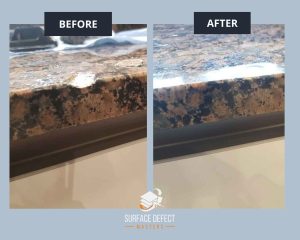 Granite and Marble: Repairing Countertops and Fireplace Hearths
Granite and Marble: Repairing Countertops and Fireplace Hearths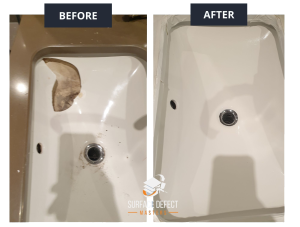

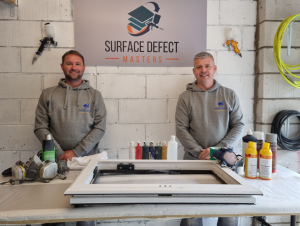 Are you ready to take your hard surface repair skills to the next level? Our
Are you ready to take your hard surface repair skills to the next level? Our 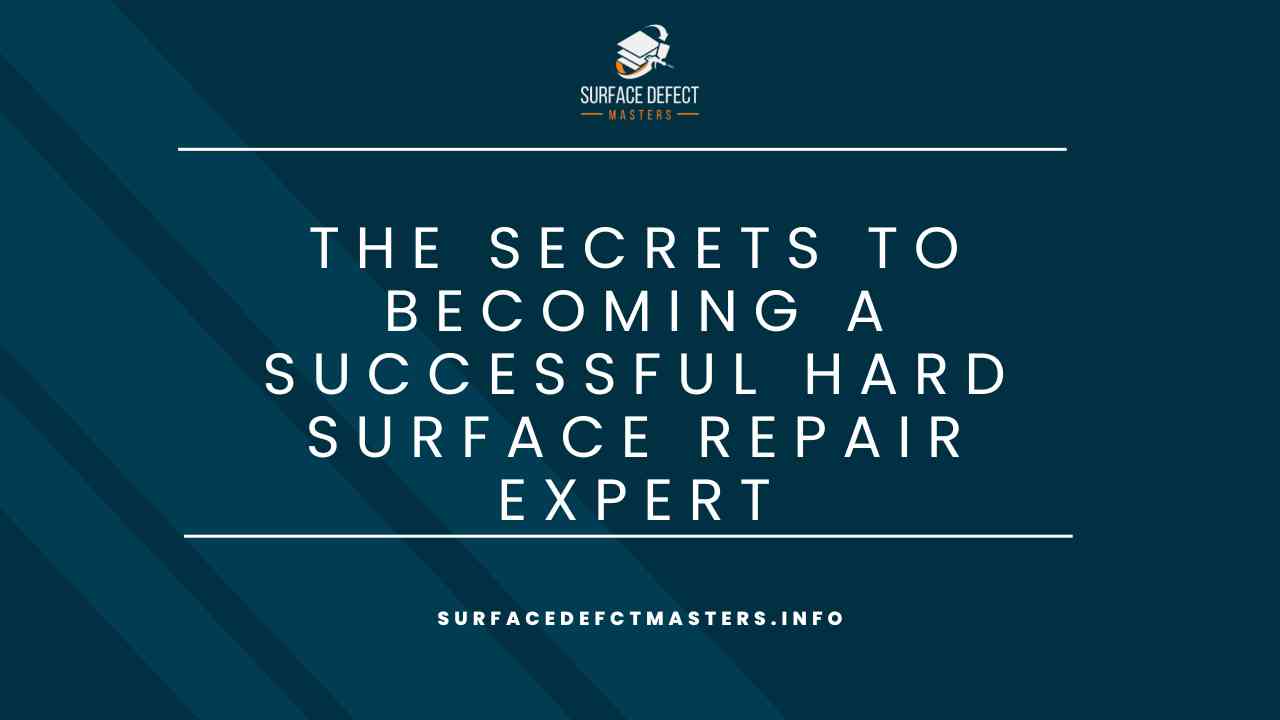



 When undertaking hard surface repairs, safety should always be a priority. It is essential to take the necessary precautions to protect yourself and anyone nearby from potential harm. This means wearing protective gear such as gloves, goggles, and a face mask; making sure all tools are in good working order; ensuring that all electrical connections are secure; and keeping the work area clean and well-ventilated. Additionally, it’s important to stay aware of your surroundings at all times – even minor distractions can have dangerous consequences when dealing with hazardous materials or sharp objects.
When undertaking hard surface repairs, safety should always be a priority. It is essential to take the necessary precautions to protect yourself and anyone nearby from potential harm. This means wearing protective gear such as gloves, goggles, and a face mask; making sure all tools are in good working order; ensuring that all electrical connections are secure; and keeping the work area clean and well-ventilated. Additionally, it’s important to stay aware of your surroundings at all times – even minor distractions can have dangerous consequences when dealing with hazardous materials or sharp objects.
 While technological advancements are critical for the future of the industry, there are still some skills that are essential for success. Hard surface repair experts need to have a keen eye for detail, and a willingness to learn new techniques and methods. Additionally, strong communication skills are essential, as experts will need to communicate with clients and team members to ensure that repairs are completed to their satisfaction.
While technological advancements are critical for the future of the industry, there are still some skills that are essential for success. Hard surface repair experts need to have a keen eye for detail, and a willingness to learn new techniques and methods. Additionally, strong communication skills are essential, as experts will need to communicate with clients and team members to ensure that repairs are completed to their satisfaction.
